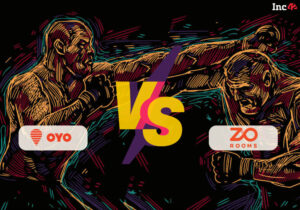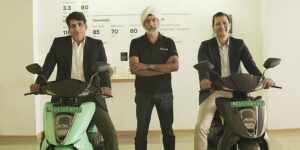The accelerated pace of digital transformations due to COVID-19 has pushed many businesses in the recent past to leverage SaaS-based tools for advantages like flexibility, cost optimization and the ability to innovate at scale.
According to a report authored by SaaSBOOMi and McKinsey, India could be on the cusp of unlocking a $1 trillion opportunity for SaaS companies, creating nearly half a million new jobs by 2030.
As digital tools pave the way for growth beyond geographical boundaries due to the pandemic, more SaaS startups are entering global markets to kickstart a new phase of growth while exploring new avenues and technologies.
To deliberate on the strategies that Indian SaaS startups are leveraging to attract businesses from across the world, YS in association with AWS hosted a CTO roundtable where leading industry experts delved into critical frameworks that have helped them drive impact globally.
Here are some of the key takeaways from the roundtable discussions:
Why customised strategies and knowing the ideal customer profile matters for scaling with SaaS products
Much before they made a splash globally, many of these panellists were part of fledgling organisations that were looking for an opportunity to scale. Their journey to the top had its share of challenges and required them to balance tactical steps with strategies for long-term business growth.
The first discussion focussed on both long and short term strategies that these CTOs employed while aiming for global growth and the lessons they learned along the way.
The panel was moderated by Akshay Patel, Principal SaaS Business Lead, AWS SaaS Factory and the featured speakers were Praveen Sridhar, Head of ISV Segment, AISPL; Deepak Diwakar, Co-founder, MindTickle; Harishankaran K, Co-founder and CTO, HackerRank; Deepak Bala, Co-Founder, Rocketlane and Manish Sharma, Vice President, Aurigo Software Technologies.
Delving into what he learnt while working with Freshworks, Rocketlane’s Deepak Bala stressed on the importance of assessing the right time to implement a system or process.
“Often businesses end up implementing processes or systems too early in their journey to measure metrics like revenue or growth. It means that the business is optimising for scale too early. On the other hand, if you don’t have any processes or guardrails it becomes difficult to gauge how the product is performing. And, in my opinion anything that’s not measurable cannot be improved upon,” he added.
Agreeing, Aurigo Software Technologies’ Manish Sharma stated that to find the right parameter or metric to measure, companies should start from the outcomes they want to achieve. He also felt that having the right set of partners can help an organisation to scale effectively.
At the same time, HackerRank’s Harishankaran K had a word of advice for SaaS businesses eyeing global markets: handle different markets differently. “For instance, while starting out we saw Indian customers liked having our contact details and would call me or my co-founder if anything went wrong. And, we were always ready to help them. When we moved to the US, we saw our customers preferring self-service solutions,” he explained.
Meanwhile, MindTickle’s Deepak Diwakar feels that the first step in a business’ SaaS journey should be to let developers understand the customer and get an idea of what they need. “However, to reach this point you also need to hire the right kind of talent and have experienced professionals on board,” he stated.
How curious teams and distributed hiring can boost productivity
A key driver of the Indian SaaS industry’s success are the talented teams of developers that work across multiple versions of products while trying to meet customers’ varying needs. As critical as they are to an organisation, it can be a tough task to hire and retain quality talent.
In the second discussion of the event, CTOs dwelled on the best practices for hiring, retaining talent and, cultivating developers’ interest and curiosity. The discussion was moderated by Naveen Asrani, Head-Startup Growth Initiatives, Asia-Pacific & Japan, AWS and featured Dhruv Kapoor, Co-founder & CTPO, Zilingo; Sourabh Agarwal, Co-founder and CTO, HevoData; Rama Krishna SV, Chief Engineer, Upshot.ai; Komal Prajapati, CTPO at BetterPlace Safety Solutions and Harishankaran K, Co-founder and CTO, HackerRank as speakers.
On being asked if HackerRank hires candidates on the basis of aptitude or attitude, Harishankaran said given how technological advancements keep on evolving it makes sense to hire professionals that have the willingness and learnability to acquire new skills. As a company that builds solutions to hire developers, HackerRank advises its clients to do the same and focus on finding professionals with an attitude to keep learning, he added.
At the same time, HevoData’s Sourabh stated that an ideal hiring practice would stress both on a person’s IQ as well as their curiosity to learn. “Apart from focussing on a candidate’s programming and developer skills, we also ask them if they are participating in any coding challenges or about their open source contributions or anything that indicates their inclination to keep learning,” he said.
Meanwhile, Naveen also said that the clientele of a typical SaaS company now featured several blue-collared workers too, who are adapting to largely digitised work settings due to the pandemic. “They view technology from very different prisms and are not very tech-savvy. As a result, SaaS companies are now realising the importance of developers who could empathise with them and have an emotional quotient (EQ),” he added.
So, how feasible is it to hire a candidate on the basis of their EQ and ability to empathise? Zillingo’s Dhruv had some cautionary advice against using metrics like emotional quotient while hiring. According to him, EQ is interpreted differently by everyone and interviews are usually too short to gauge a candidate’s ability to empathise.
The panellists also discussed how remote and hybrid work settings have transformed hiring practices — one of them being that geographical locations were no longer a restriction while recruiting developers and distributing hiring was now the norm. Although, companies should be careful to build teams that have some sort of cultural and time zone match so that they can work well in the long run, they added.
But how can SaaS companies build a culture that could groom leaders of the future? For Sourabh, it means investing time in organising activities and initiatives that can help in creating the required culture dynamics. “If you communicate honestly and consistently about the importance of such activities, you will be able to curate a team of like-minded people who will try to adapt and work towards the company’s success.”
Meanwhile, Komal said that all teams should have clarity and visibility about the organisation’s goals, so that they could align their effort accordingly, irrespective of their position.
People-first cultures and regular interactions to keep engineering teams motivated and dedicated
While planning for long-term business growth, SaaS companies have the additional responsibility of scaling their organisational structure too. The more scalable an organisation is, the higher is its ability to grow while pivoting or organisational changes. The third panel discussion focussed on how the CTOs ensured that their organisation scaled along with their business and was moderated by Siddhartha Ahluwalia, Venture Capital and Startup, Business Development Manager, South, AWS.
The panel featured Gururaja Yellapur, Vice President-Technology, Omega Healthcare; Saurabh Arora, Co-founder, Plum HQ; Sajeev Aravindan, Co-Founder & CTO, VaultEdge and Arjun Khanna, AVP-Engineering, Animaker Inc as speakers.
The speakers shared their insights about how they saw their organisations, and not just their engineering teams, evolve as their processes changed from non-agile monolithic systems to agile microservices-based systems.
Saurabh said that he had learnt a lot after his first startup Airwoot was acquired by Freshworks and realised that an organisation is built around its people. “With PlumHQ, I am identifying natural leaders and then building teams around them. This is resulting in a natural fortification of teams,” he said.
Leading an organisation with over 18,000+ employees, Gururaja said that it helped to convey an organisation’s vision for the future to its teams, so that they are well-versed with their scope of work and function in tandem with it.
Highlighting the importance of processes wherein developers can empathise with clients and understand their needs, Arjun stated that Animaker believed in encouraging a management to have a tolerance for mistakes. “Teams will make mistakes and they’ll learn from them in the process. As the users’ feedback goes to the developers, the engineering teams understand what their requirements are.”
The panellists touched upon how they are working to introduce processes that institutionalize peer learning while working remotely. While virtual meetings helped them stay updated about professional commitments, these CTOs also encouraged interactions wherein the teams talked about their personal achievements and what’s inspiring them.
Sajeev said that in the wake of remote work settings, VaultEdge has instituted new processes to ensure that the teams were interacting regularly not only with each other but also with the senior leadership.
“Moreover, anyone who joins the team is assigned a mentor, usually a peer from the same area of work, to help them familiarise with the existing tools and development practices. Plus, we have a call every Friday to discuss things like what our team members are working on and what they’re planning for the weekend,” he added.
He also said that such initiatives have helped the startup avoid a culture where the teams only interacted when they encountered a problem.









